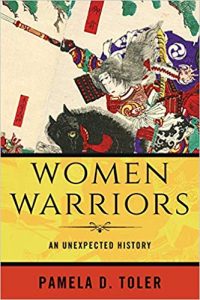An Ode to Sticky Notes
 Occasionally someone in one of the various on-line writing groups in which I hang out will ask how people organize their research. It usually generates a discussion of digital versus paper filing systems. And I occasionally weigh in with my own multi-layered, always evolving system of computer files, notebooks, 3 x 5 cards, and the glory of the project box (courtesy of Twyla Tharp). Within that system, one thing stays constant: sticky-notes.
Occasionally someone in one of the various on-line writing groups in which I hang out will ask how people organize their research. It usually generates a discussion of digital versus paper filing systems. And I occasionally weigh in with my own multi-layered, always evolving system of computer files, notebooks, 3 x 5 cards, and the glory of the project box (courtesy of Twyla Tharp). Within that system, one thing stays constant: sticky-notes.
I literally don’t remember what it is like to do historical research without sticky-notes. 3M marketed the first Post-It notes the year I wrote my master’s paper and I embraced them with enthusiasm. Over the years, they’ve become one of the pillars on which my research process rests.
When sticky-notes first came out, they were expensive for someone on a graduate student budget, so I used them sparingly. I cut them in two. I reused them until the sticky strips grew fuzzy and refused to stick any more. I reverted to using scraps of paper as bookmarks. (Because real bookmarks were also a luxury on a graduate student budget.)
Now I use sticky-notes with abandon. I even stopped trying to re-use them about a year ago. (I finally realized the aggravation of losing information I had marked when they fell out a book outweighed the virtuous glow of reducing paper usage one small square at a time.)
At the moment I have a large (and growing) pile of books on the floor near my desk, stuffed with more-or-less color-coded sticky-notes and tabs. The tabs mark sections I want to capture for the books. The regular sticky-notes allow me to annotate a page in a library book with an idea or response to the author. (Because while I happily underline and scribble in the margins of books I own, I do not write in library books. I am not a barbarian.)
I also have sticky-notes on my desk, the edge of my desk top computer, the pages of my bullet journal, and the Big Calendar which becomes a necessity when I need to track my progress on multiple projects, or in the case of my current book, multiple workflows within a single project.
In short, sticky-notes of various sizes, shapes, and colors help me keep track of all the information that goes into writing a book. Occasionally they even help keep track of me. (It makes My Own True Love very happy when I leave a sticky-note next to the coffee maker saying when I left the house and where I’m going.)
Dr. Spencer Silver, the 3M scientist who accidentally discovered the low-tack stick-um that makes the sticky-note stick and unstick described the result as a “solution without a problem.” I humbly beg to differ.
—
Armed with a PhD in history, a well-thumbed deck of library cards, and a large bump of curiosity, author, speaker, and historian, Pamela D. Toler goes beyond the familiar boundaries of American history to tell stories from other parts of the world as well as history from the other side of the battlefield, the gender line, or the color bar. Toler is the author of nine books of popular history for children and adults, including most recently Women Warriors: An Unexpected History and Across the Minefields, due out on August 31. She is currently working on the biography of Sigrid Schultz, who was the head of the Chicago Tribune‘s Berlin bureau during the Weimar Republic and the rise of Nazi Germany.
Website: https://www.pameladtoler.com/
Blog: https://www.historyinthemargins.com/
Twitter: @pdtoler
Instagram: pamelatolerauthor
Women Warriors: An Unexpected History
 For the most part, women warriors have been pushed into the historical shadows, hidden in the footnotes, or half-erased. But in fact, women have always gone to war—or fought back when war came to them. They fought to avenge their families, defend their homes (or cities or nations), win independence from a foreign power, expand their kingdom’s boundaries, or satisfy their ambition. They battled disguised as men. They fought, undisguised, on the ramparts of besieged cities. Some were skilled swordsmen or trained snipers, others fought with improvised weapons. They were hailed as heroines and cursed as witches, sluts, or harridans.
For the most part, women warriors have been pushed into the historical shadows, hidden in the footnotes, or half-erased. But in fact, women have always gone to war—or fought back when war came to them. They fought to avenge their families, defend their homes (or cities or nations), win independence from a foreign power, expand their kingdom’s boundaries, or satisfy their ambition. They battled disguised as men. They fought, undisguised, on the ramparts of besieged cities. Some were skilled swordsmen or trained snipers, others fought with improvised weapons. They were hailed as heroines and cursed as witches, sluts, or harridans.
In Women Warriors, historian Pamela Toler examines the stories of historical women for whom battle was not a metaphor: using both well known and obscure examples, drawn from the ancient world through the twentieth century and from Asia and Africa as well as from the West. Looking at specific examples of historical women warriors, she considers why they went to war, how those reasons related to their roles as mothers, daughters, wives, or widows, peacemakers, poets or queens—and what happened when women stepped outside their accepted roles to take on other identities. She considers the ways in which their presence on the ramparts or the battlefield has been erased from history and looks at the patterns and parallels that emerge when we look at similar stories across historical periods and geographical boundaries. Toler tells the stories of queens and commoners, those who commanded from the rear and those who fought in the front lines, those who fought because they wanted to, because they had to, or because they could. She looks at ordinary women who did extraordinary things as well as the truly exceptional. And she kicks a few historical shins in the process.
Women warriors are assumed to be historical anomalies—Joan of Arc, not G.I. Jane. By comparing the stories of individual women across historical periods and geographical boundaries, Toler uncovers a different story. Women have always fought, not in spite of being women but because they are women.
–Praise for Women Warriors
“Pamela Toler’s writing never fails to delight me. In Women Warriors, she is like that best friend who is just way smarter than you, whose witty and engaging explanations help you see the past in a brand-new light. Toler takes you on a whirlwind tour through history and around the world, sharing stories about the hidden history of women who have led in military battle, elucidating the reasons why women’s long history in combat has often been hidden. Toler is a first-rate scholar who truly knows her stuff, and yet she imparts her wisdom with a light and engaging touch.”
—Elizabeth Letts, author of the New York Times bestseller The Perfect Horse
“In Women Warriors: An Unexpected History, self-described ‘academic renegade’ Pamela D. Toler has crafted a smart and highly entertaining chronicle of female fighters. Working across centuries and continents, Toler introduces readers to a host of colorful, courageous women who proved themselves as formidable foes on the battlefield, outwitting and overpowering their male adversaries along the way. From Boudica, who led a rebellion against the Roman Empire, to Maria Bochkareva, who commanded Russia’s first all-female battalion during World War II, we meet countless forgotten sister soldiers who acted with valor and verve. Toler may call this history unexpected, but readers will consider it a necessary and most welcome addition to the current literature about women and war.”–Paige Bowers, author of The General’s Niece: The Little-Known de Gaulle Who Fought to Free Occupied France
“Pamela Toler’s exhilarating accounts of so many women who went to war, around the world, from antiquity to the present, and for so many different reasons, finally puts to rest the tired old arguments that only men are fit for combat.”—Adrienne Mayor, author of The Amazons: Lives and Legends of Warrior Women Across the Ancient World
“Lucid and lively, Pamela Toler’s delightfully complex history of women’s presence on the battlefield debunks the myth that women have not been and therefore cannot be warriors. It is a welcome contribution to the growing body of work that seeks to bring women out of the shadows of history, in this case the particularly male world of military history.”–Anne Boyd Rioux, author of Meg, Jo, Beth, Amy: The Story of Little Women and Why It Still Matters
“Toler blows past all expectations with this thoroughly delightful, personable, and crucially important history of women warriors. From the start she makes it clear that this will not be the sort of heroic hagiography that many collective biographies of women (especially those aimed in any way at teen readers) often become. Indeed, the women she writes about were not always heroic, and some were downright bloodthirsty and terrible, but there is no doubt that every single one of them was a warrior. Striking a blow against male historians who lazily dismiss female soldiers as “insignificant exceptions,” Toler sets out to uncover just how common women warriors were in history. Cutting a broad swath across continents and conflicts, she provides one story after another of women who fought hard for their people, their tribes, and their countries. Her captivating writing style, which is marked by disarmingly cheeky footnotes, makes this trip through so much forgotten history an exceedingly pleasurable reading experience, and her subjects, from the famous (Joan of Arc) to the criminally overlooked (Buffalo Calf Road Woman, who likely killed Custer) are a treat to learn about. An absolute research gem, Women Warriors is a historian’s roar all libraries should welcome.” —Booklist
Category: Contemporary Women Writers, How To and Tips






























